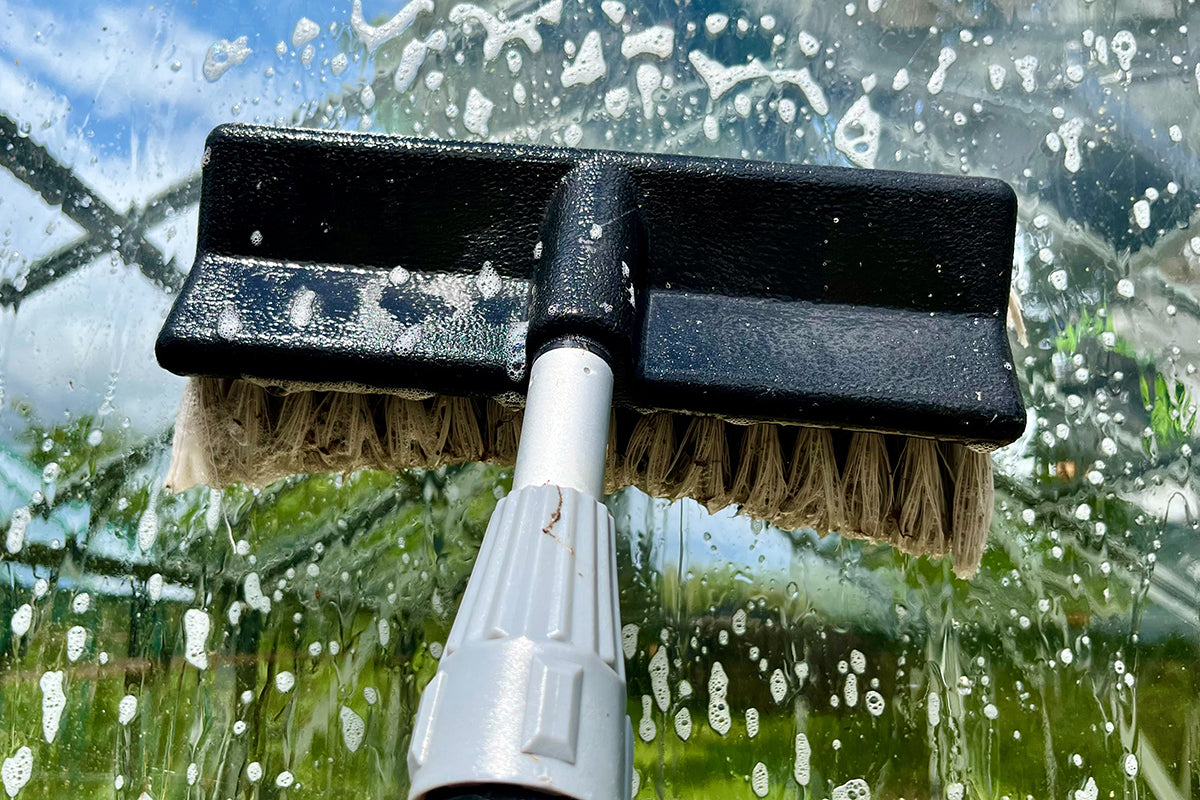Scrubbed away

A good year for aphids will probably be considered an oxymoron by some, but 2023 really has seen more than its fair share of these tiny insects. Weather conditions in June seemed to suit their propensity for rapid multiplication and a dearth of ladybirds, who along with their larvae would normally be eating the aphids, wasn’t helping. Have you seen a ladybird this year? We spotted one last week and are hoping that their numbers will start to rise exponentially with this abundant food source available to them.
Aphids can, of course, be troublesome, damaging newly formed flower buds or reducing crops on beans and other vegetables in the garden. Honeysuckle on the cottage wall at Genus HQ has been smothered in aphids preventing flowers from forming and creating a sticky residue on anything below. Our wall trained Philadelphus always gets heavily affected on the flower stems though it invariably shrugs off any ill effects.
One issue is the build up of aphids on the sycamore trees in our two small copses. The aphids have a relationship with ants who protect them from predators and get rewarded with a sweet honeydew that the aphids excrete. Some of this honeydew falls to the ground and if you should be unlucky enough to leave your car under a tree for a day, tiny spots of the sticky residue will be found to have coated your windscreen and paintwork.
More of an issue is its appearance on our greenhouse glass. Rain doesn’t wash it off and an unfortunate side effect is the build up of a sooty mould that not only looks unsightly but prevents light transmission onto the growing plants. This week we got out our long handled brush, a bucket of soapy water, and scrubbed away. It wasn’t until we finished the job that we realised just how dirty the glass had become. The results were instantly noticeable. It hasn’t solved the problem - the aphids are still in the trees - but a repeat treatment in December will have the glass sparkling and ready for spring sowing.











